Abstract
For many years it has been accepted that fibre dimensions are the most important factor in the development of asbestos related disease with long fibres being more dangerous than short for all types of asbestos. This information has been derived from in vitro experiments and injection or implantation experiments since the kilogramme quantities of specially prepared dusts that are necessary for long term inhalation have not been available. The present study has taken advantage of the availability of a sample of amosite produced so that almost all fibres were less than 5 micron in length. The effects of this dust were compared to dust prepared from raw amosite that contained a very high proportion of long fibres. Previous data from studies with UICC amosite, which was intermediate in length, were also available for comparison. At the end of 12 months of dust inhalation, significantly more short fibre amosite was present in the lung tissue compared to the long but while the long fibre dust caused the development of widespread pulmonary fibrosis, no fibrosis at all was found in animals treated with short fibre. One third of animals treated with long fibre dust developed pulmonary tumours or mesotheliomas but no pulmonary neoplasms were found in animals treated with short fibre dust. Following intraperitoneal injection, the long fibre amosite produced mesotheliomas in 95% of animals with a mean induction period of approximately 500 days. With short fibre dust, only a single mesothelioma developed after 837 days. In previous inhalation studies with UICC amosite, relatively little pulmonary fibrosis had developed and only two benign pulmonary tumours. This would suggest that to produce a significant carcinogenic response in rat lung tissue amosite fibres must be longer than those in the UICC preparation. Following the injection of UICC amosite, however, mesotheliomas developed in the same proportion of animals and with the same mean induction period as with long fibre dust. From this it would appear that while very short fibres exhibit little carcinogenicity to either lung or mesothelial tissues, mesotheliomas can be produced by dust preparations consisting of shorter fibres than are needed to produce tumours.
Full text
PDF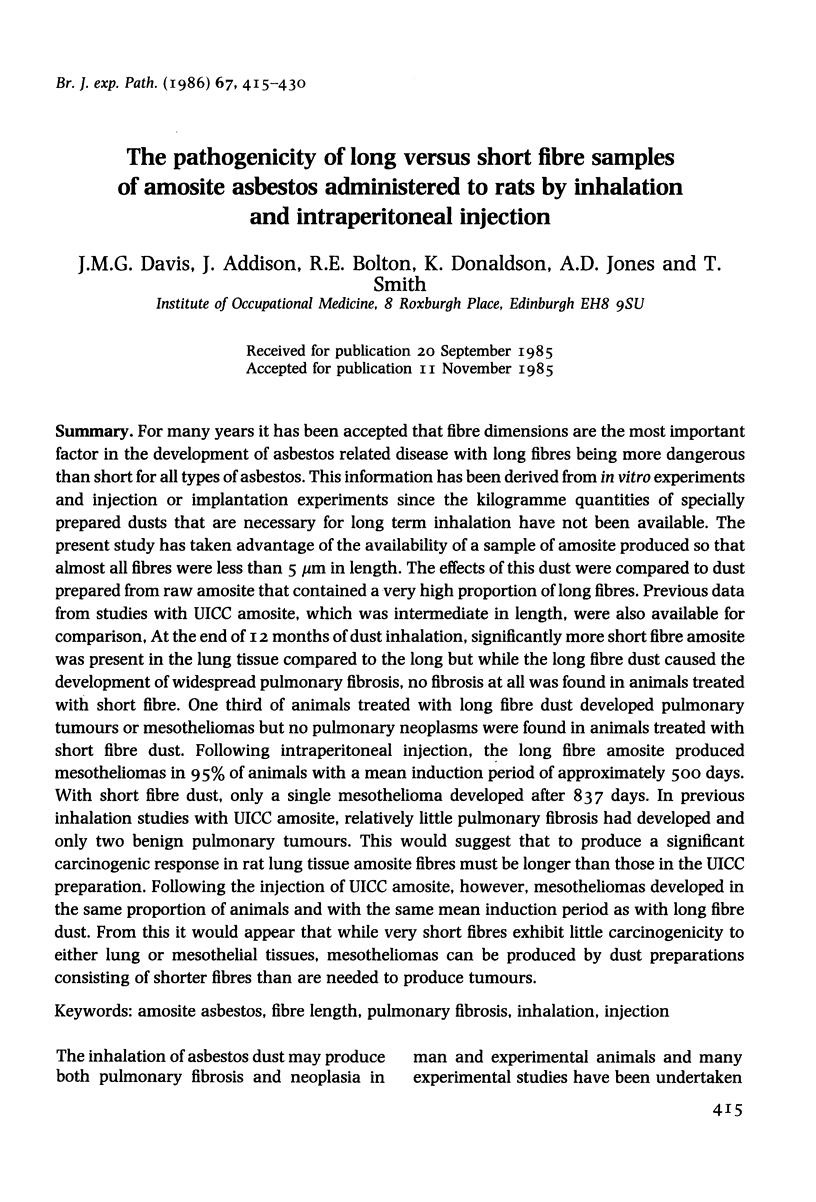



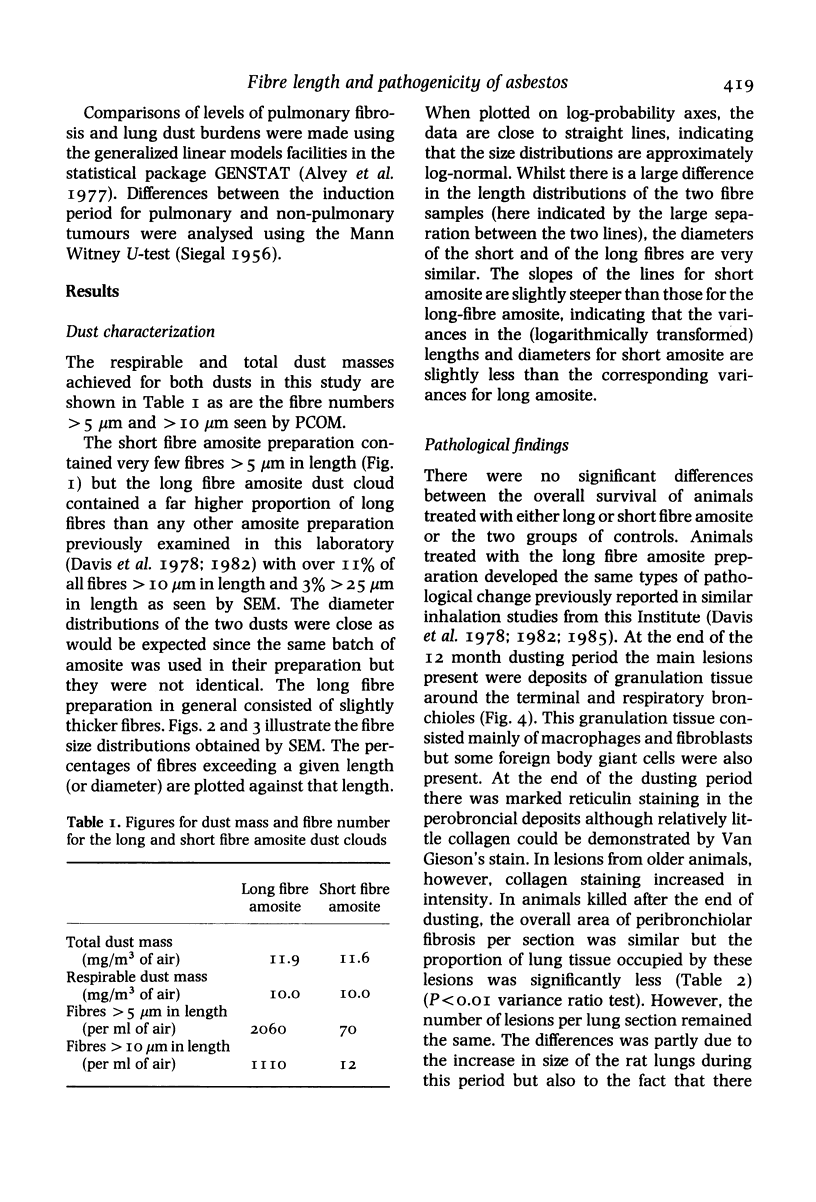
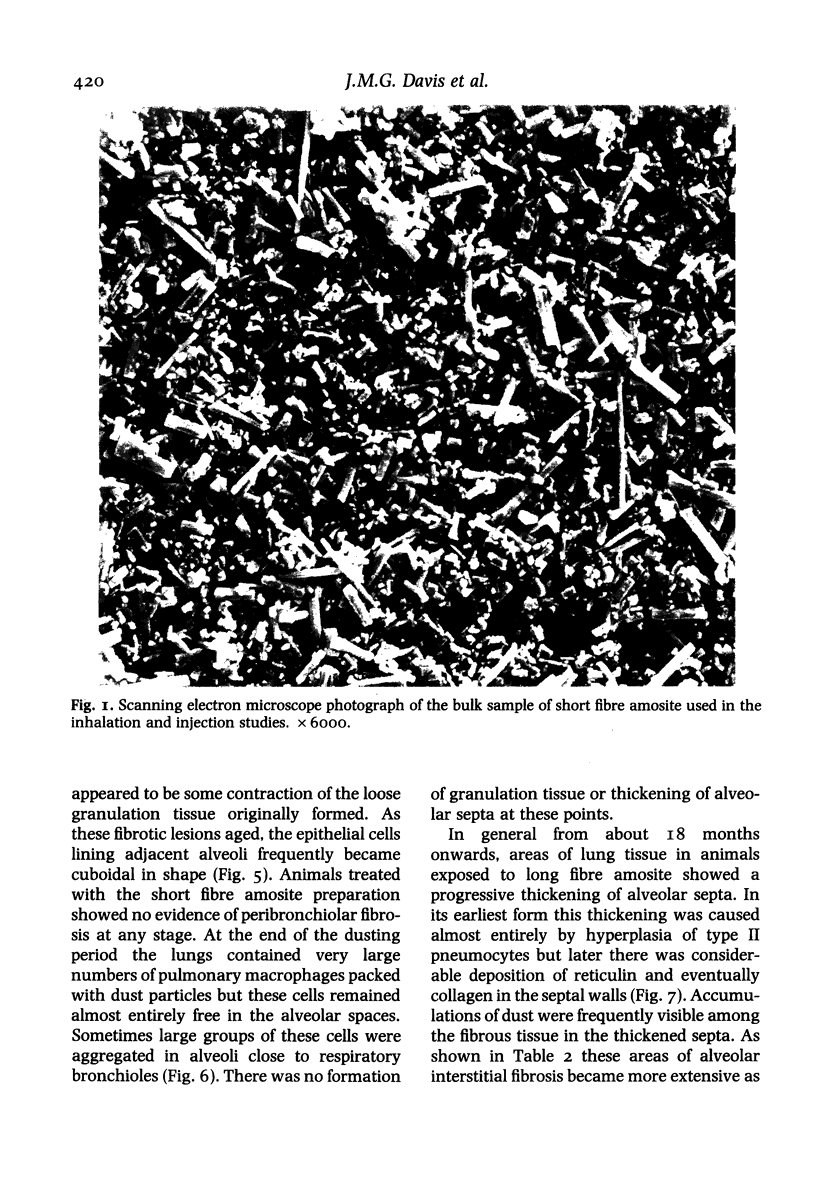
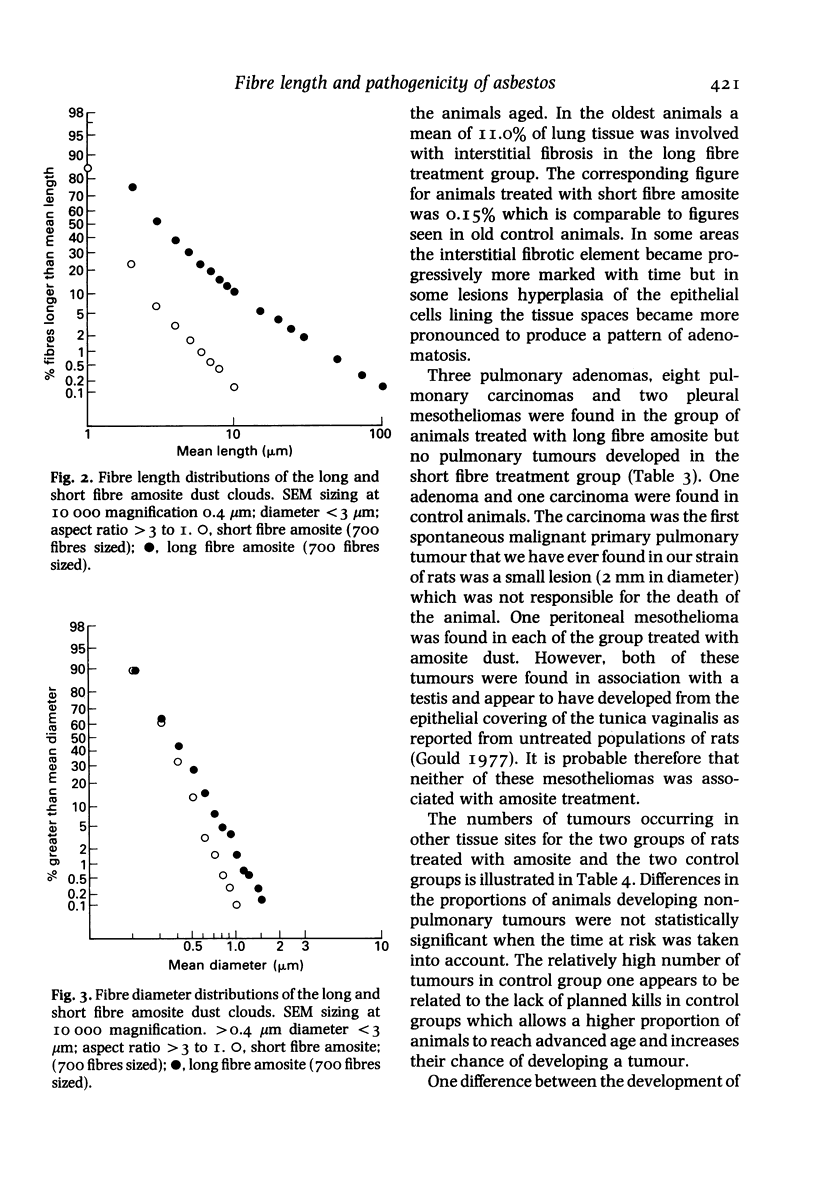

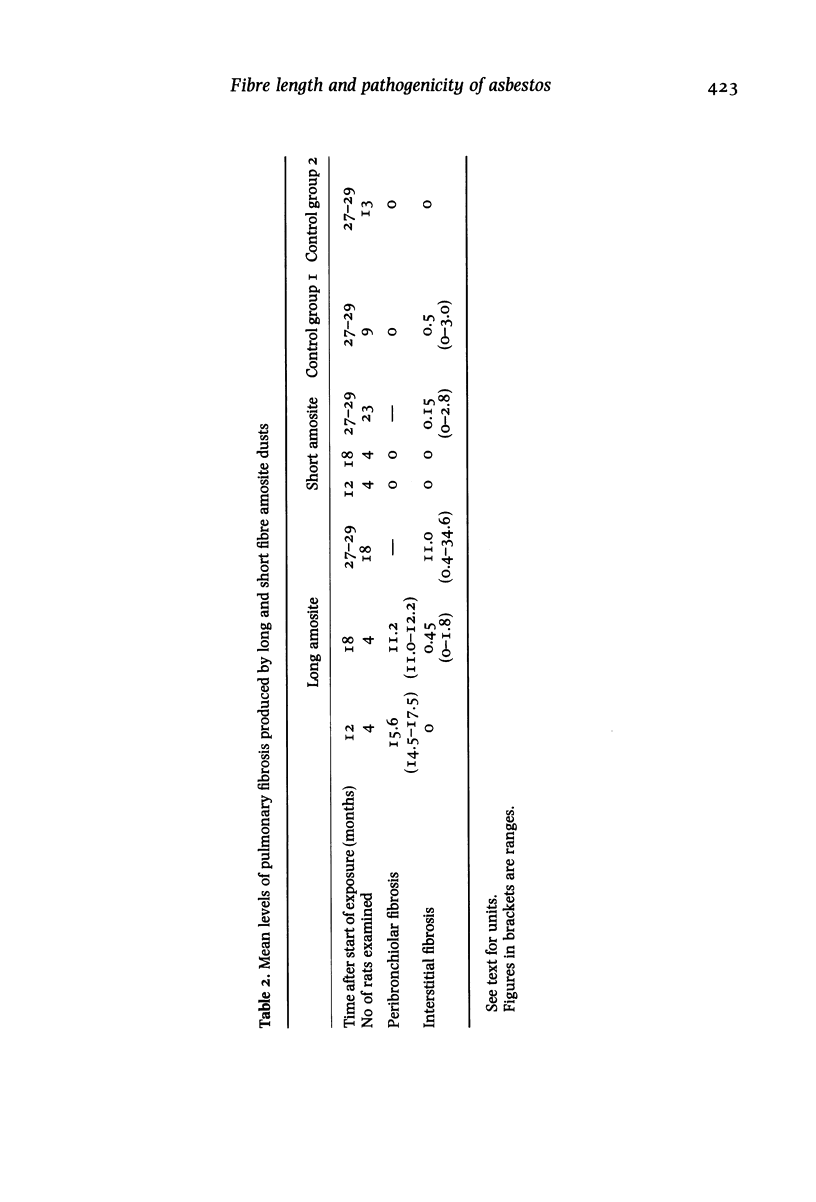

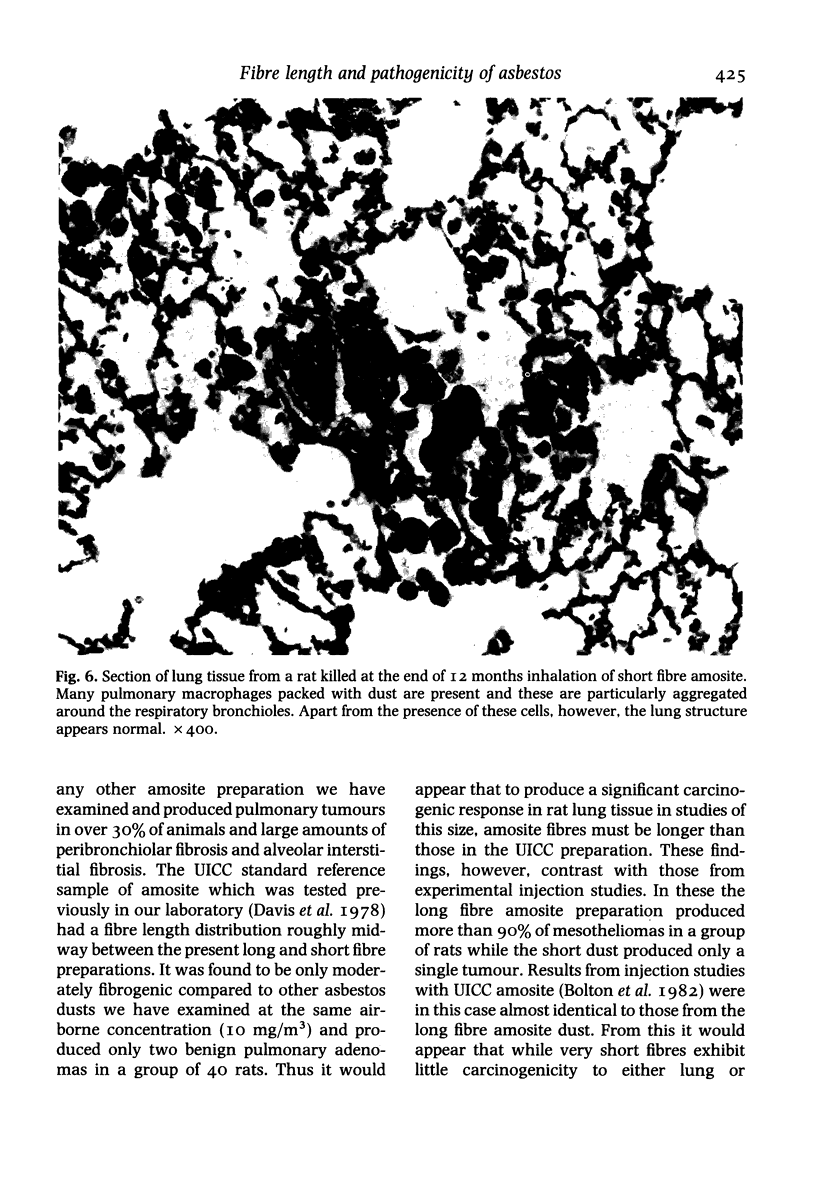
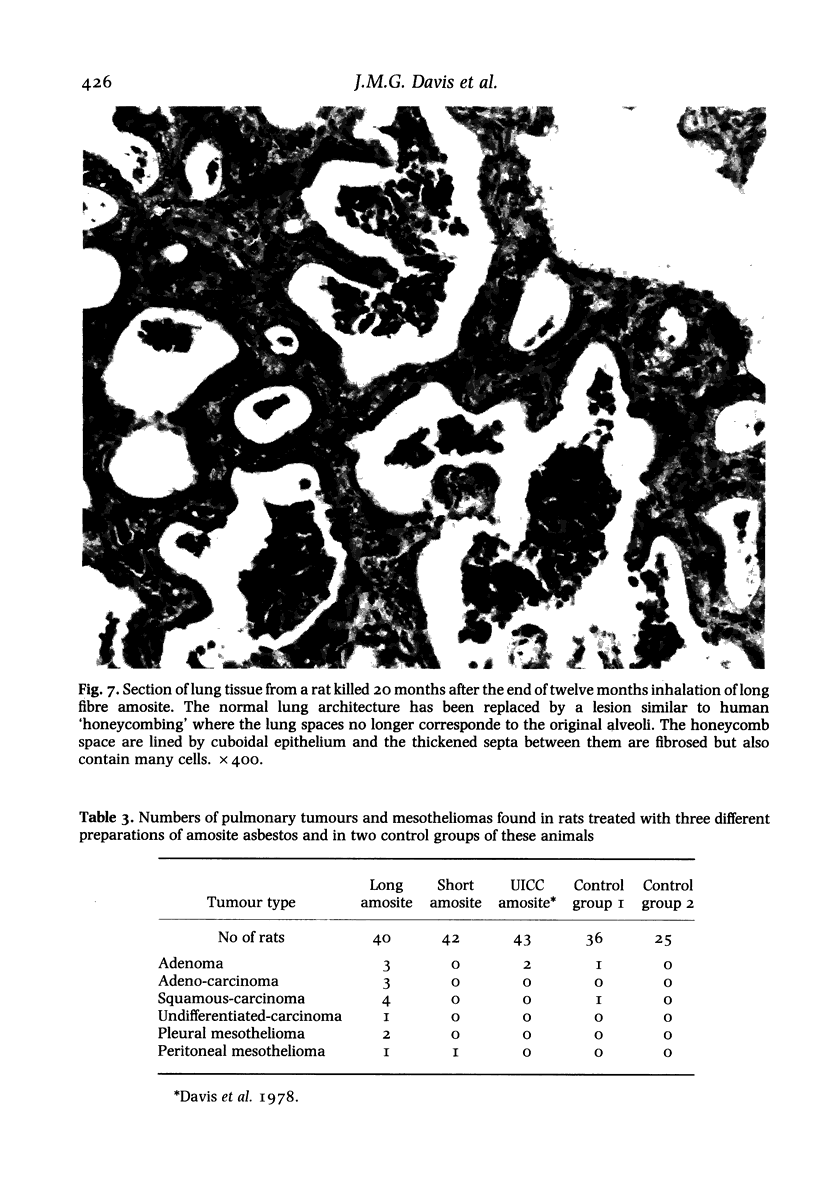


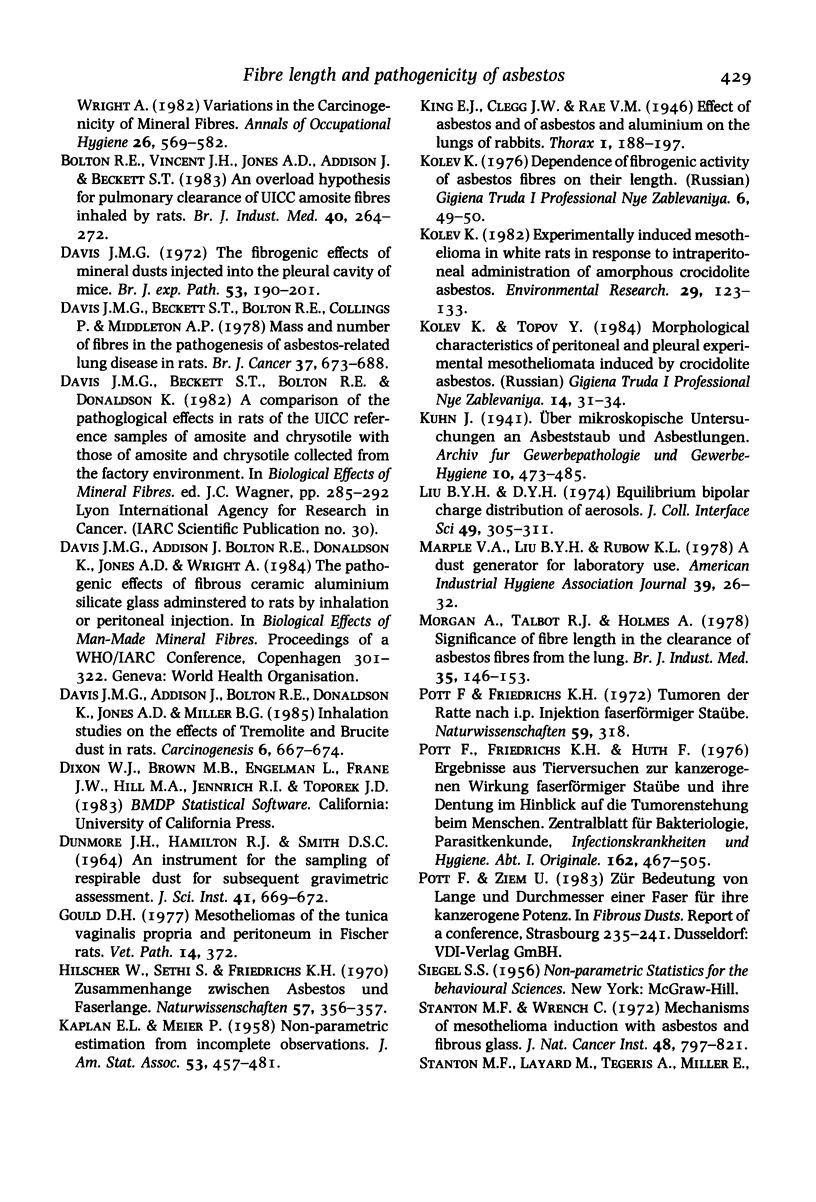

Images in this article
Selected References
These references are in PubMed. This may not be the complete list of references from this article.
- Beckett S. T. The generation and evaluation of UICC asbestos clouds in animal exposure chambers. Ann Occup Hyg. 1975 Dec;18(3):187–198. doi: 10.1093/annhyg/18.3.187. [DOI] [PubMed] [Google Scholar]
- Bolton R. E., Vincent J. H., Jones A. D., Addison J., Beckett S. T. An overload hypothesis for pulmonary clearance of UICC amosite fibres inhaled by rats. Br J Ind Med. 1983 Aug;40(3):264–272. doi: 10.1136/oem.40.3.264. [DOI] [PMC free article] [PubMed] [Google Scholar]
- Davis J. M., Addison J., Bolton R. E., Donaldson K., Jones A. D., Miller B. G. Inhalation studies on the effects of tremolite and brucite dust in rats. Carcinogenesis. 1985 May;6(5):667–674. doi: 10.1093/carcin/6.5.667. [DOI] [PubMed] [Google Scholar]
- Davis J. M. The fibrogenic effects of mineral dusts injected into the pleural cavity of mice. Br J Exp Pathol. 1972 Apr;53(2):190–201. [PMC free article] [PubMed] [Google Scholar]
- Gould D. H. Mesotheliomas of the tunica vaginalis propria and peritoneum in Fischer rats. Vet Pathol. 1977 Jul;14(4):372–379. doi: 10.1177/030098587701400409. [DOI] [PubMed] [Google Scholar]
- Hilscher W., Sethi S., Friedrichs K. H., Pott F. Zusammenhänge zwischen Asbestose und Faserlänge. Naturwissenschaften. 1970 Jul;57(7):356–357. doi: 10.1007/BF01173115. [DOI] [PubMed] [Google Scholar]
- Kolev K. Experimentally induced mesothelioma in white rats in response to intraperitoneal administration of amorphous crocidolite asbestos: preliminary report. Environ Res. 1982 Oct;29(1):123–133. doi: 10.1016/0013-9351(82)90013-5. [DOI] [PubMed] [Google Scholar]
- Marple V. A., Liu B. Y., Rubow K. L. A dust generator for laboratory use. Am Ind Hyg Assoc J. 1978 Jan;39(1):26–32. doi: 10.1080/0002889778507709. [DOI] [PubMed] [Google Scholar]
- Pott F., Friedrichs K. H., Huth F. Ergebnisse aus Tierversuchen zur kanzerogenen Wirkung faserförmiger Stäube und ihre Deutung im Hinblick auf die Tumorentstehung beim Menschen. Zentralbl Bakteriol Orig B. 1976 Aug;162(5-6):467–505. [PubMed] [Google Scholar]
- Pott F., Friedrichs K. H. Tumoren der Ratte nach i.p.-Injektion faserförmiger Stäube. Naturwissenschaften. 1972 Jul;59(7):318–318. doi: 10.1007/BF00593370. [DOI] [PubMed] [Google Scholar]
- Stanton M. F., Wrench C. Mechanisms of mesothelioma induction with asbestos and fibrous glass. J Natl Cancer Inst. 1972 Mar;48(3):797–821. [PubMed] [Google Scholar]
- Wagner M. M. Pathogenesis of malignant histiocytic lymphoma induced by silica in a colony of specificpathogen-free Wistar rats. J Natl Cancer Inst. 1976 Sep;57(3):509–518. doi: 10.1093/jnci/57.3.509. [DOI] [PubMed] [Google Scholar]







